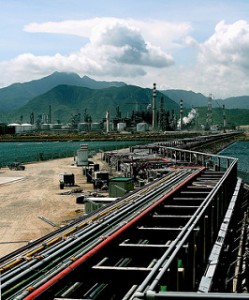With many refineries looking for heavy fuel oil (HFO) outlets from their residue streams, downgrading of higher value products remain a persistent concern due to the lack of secondary processing capacity. Although the refining industry is expected to add more than 7.0 million bpd of new distillation throughput by the early 2020s, the global refining industry could require an even higher capacity when it involves secondary processing.
According to the recently released OPEC Refining Outlook, about 7.6 million bpd of new refining capacity is projected to come online by 2022, while 19.6 million bpd of new refining capacity is expected by 2040. Due to increasing demand for clean and high-quality products, secondary processing additions can facilitate the refining industry’s ability to meet market demand.
Against this backdrop, the OPEC report noted that high levels of secondary processing relative to new distillation capacity are driven by long-term demand for light, low-sulfur products. However, another important factor is the declining demand for HFO. In some regions, HFO consumption for fossil fuel-based power generation is declining in proportion with expansion of variable renewable energy (VRE) resources (for base-loading the electric grid).
VREs are achieving grid parity with conventional fossil fuel generation due to rapidly developing advances in energy storage technology (hybrid batteries, photovoltaic [PV] technology, distributed energy systems/microgrids, etc.), thereby eliminating previous VRE challenges. Some of the challenges seen with previous generations of renewable power systems included reverse power flow, variability and intermittency problems when trying to synchronize wind farms and solar farms with national grids (i.e., no wind = no power; no sun = no power), but not anymore.
What all this means to the refining industry are that the outlets for the disposition of HFO and residuals may be even narrower than projected. Even in developing regions like Africa and South America, with limited access to a reliable centralized grid, onsite power generation using HFO or diesel-given generators is already being curtailed with relatively small solar/PV powered microgrids that can reduce the need for fossil fuel consumption by as much as 20 to 70%.
What differentiates one refinery from another are their capacities and the types of processing units used to produce the quality of fuels in market demand. From a refinery processing perspective, the practical interpretation of these market changes seems to indicate that secondary processing, including hydrotreating, hydrocracking and increased desulfurization capability will need to come online sooner than later.








Leave a Reply
You must be logged in to post a comment.